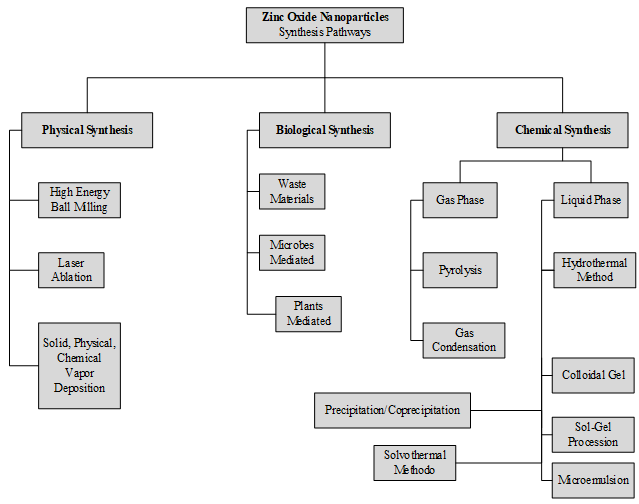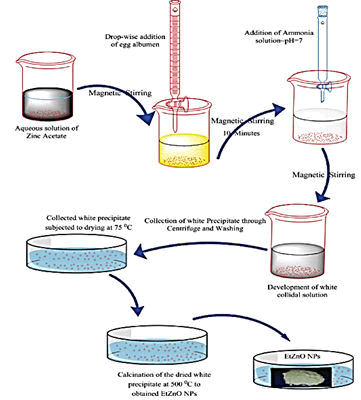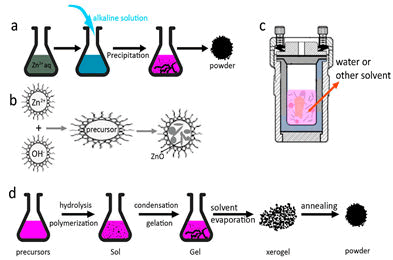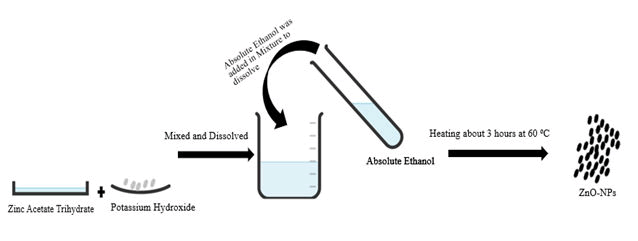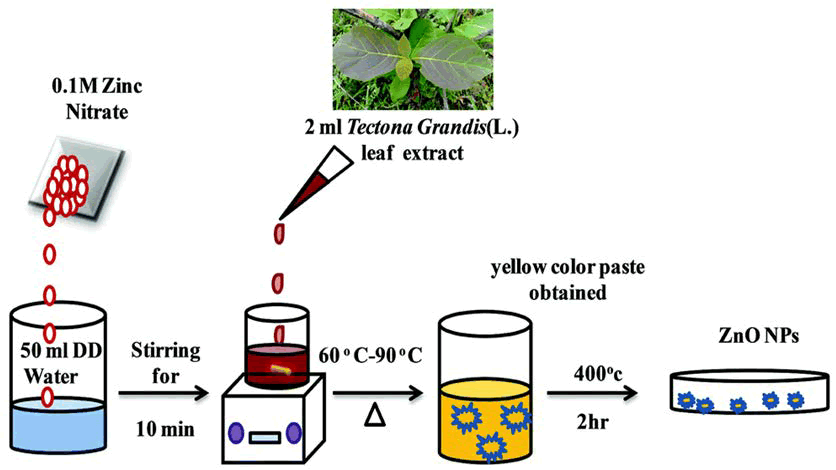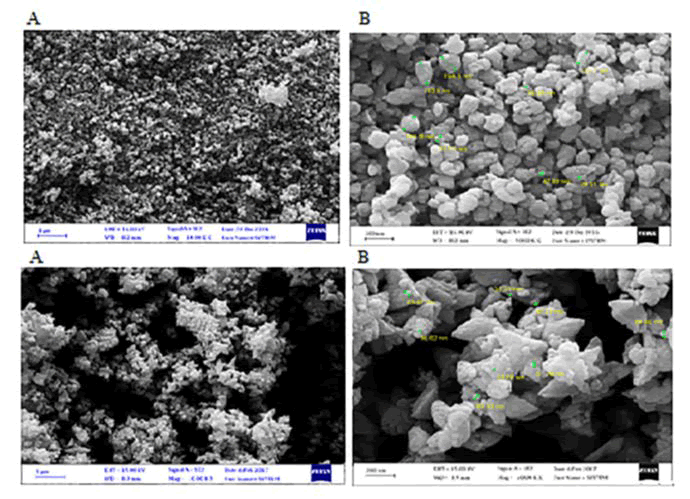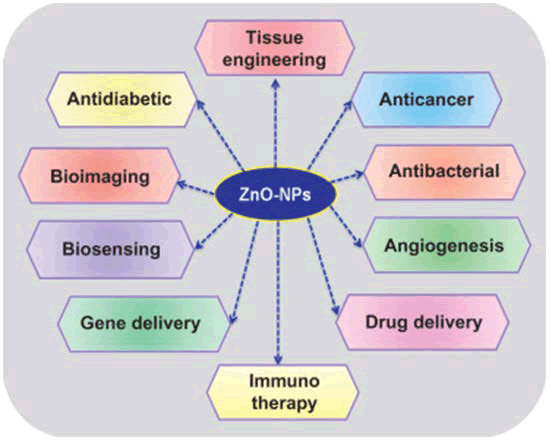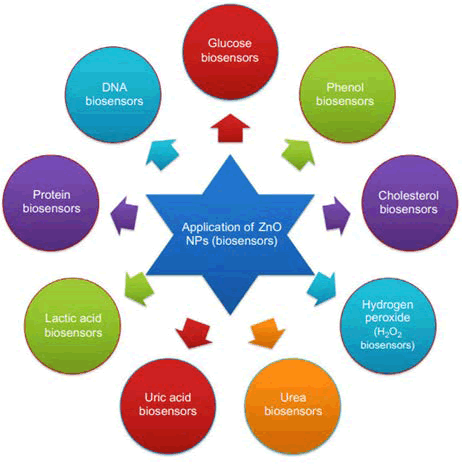Synthesis of Zinc Oxide Nanoparticles, Characterization and Biomedical Applications in Medicinal Sciences
Received: 05-Apr-2022 / Manuscript No. JMSN-22-59626 / Editor assigned: 07-Apr-2022 / PreQC No. JMSN-22-59626 / Reviewed: 20-Apr-2022 / QC No. JMSN-22-59626 / Revised: 06-Jun-2022 / Manuscript No. JMSN-22-59626 / Published Date: 13-Jun-2022
Abstract
Nanotechnology examination has substantially improved in modern years giving ingenious arrangements inside the area of biomedicine, substances technological know-how, optics and hardware. Nanoparticles are the fluctuated kind of essential elements that is collected because of an alternative to the atomic and nuclear homes of the vital parts. Lately, metallic oxide nanoparticles were broadly perused as nano-antimicrobials for overhauled purifying, mainly for curing safe organisms and parasites. The manufacture of ZnO nanoparticles chooses the physical and substance houses. General ability techniques to supply ZnO nano-particles are laser removal, aqueous methodologies, sol-gel methods, compound fume assertion strategies, co-precipitation, and precipitation methods. This article offers additional detail on the aggregate, homes and usage of zinc oxide nanoparticles.
Keywords: Synthesis approaches; ZnO-NPs; Solvothermal; Green synthesis; Medicinal
Introduction
The numerous types of drugs zinc oxide nanoparticles are coordinated decide their unmistakable physical and blend capacities. A few possible ways, to address conveying ZnO nano-debris are laser evacuation, watery procedures, electrochemical proclamations, sol-gel system, substance rage affirmation, profound deterioration, ingesting strategies, ultrasound, microwave-helped begin to approach, anodization, co-precipitation, electrophoretic assertion, and precipitation structures the use of course of motion obsession, pH, and washing medium. ZnO is an extensive band gap semiconductor with 37 eV at room temperature [1]. ZnO nanoparticles are recounted to be one of the most conveyed nanomaterials, close by titanium dioxide nanoparticles and silicon dioxide nanoparticles [2]. They are used on account that they imitate great mild, however, are safely little to be clean to unique mild. They are furthermore being examined to execute negative microorganisms in packaging and UV-guarded materials.
UV beams coming from the solar might be a wellspring of harm due to the formation of loose extremists at the outer layer of the skin and damage to the skin cells [3]. Zinc Oxide Nanoparticles (ZnO-NPs) (size ≤ 200 nm) are particularly proficient to use up light and obtain a cos-ceutical standpoint needed to sparkle the pores and skin floor. It has moreover, been applied for foot restore, in analgesics, and different fascinating therapeutic objects [4]. A few scientists made an exhaustive practical exam look at among normal ZnO-NPs and nano-size ZnO-NPs and describe their sunscreen potential [5]. Awe-inspiring surface worked on unfold restriction and redesigned in vitro Sun Affirmation Element (SPF) showed the precious career of ZnO-NPs in beautifiers [6].
Hypothesized risks to human prosperity due to these ZnO-NPs are at this point overlooked and it is far counterproductive to avoid them and not to use them. Another complicated asset of ZnO-NPs is the green sparkle, associated with the point flees, which makes it an accommodating administrator for bio-imaging strategies. Moreover, restructured using doping with exchange parts, for example, copper, cobalt, and nickel, for constantly attractive optical abilities [7].
One more use of ZnO-NPs satisfactory gesture that is taken into consideration as a big accomplishment in therapeutics) and has achieved a ton of idea of the researchers for the therapy of afflictions like proper solidified invulnerable want (ADA-SCID), unremitting granulomatous issue (CGD), haemophilia, genital visible disability, lysosomal restrict disease and sturdy dystrophy, neurodegenerative illnesses, viral defilements (e.g. Influenza, HIV, and Hepatitis), coronary disorder, and diabetes finding [8,9]. Quantum spots and tetrapod-like constructions of ZnO-NPs had been examined typically for these packages. Such quantum spots are furthermore accepting an essential occupation as sensors [10,11].
ZnO-NPs can act as a semiconductor and its properties may be modified in unique ways that have made it an empowering possibility for sensor exams. Such sensors have an essential work, that is, from perceiving everyday toxic materials to pandemic afflictions periods. Different makers have reported ZnO-NPs, primarily based biosensors for recognizing cholesterol, everyday science of artificial compounds, and other biosensing correspondences. Kazemi and coauthors have coordinated ZnO-NPs by way of sol-gel and fluid method and taken into consideration a home-advanced contraption that answered exceptionally at its "operating temperature" to identify ethanol [10].
ZnO-NPs based sensors can be used for n-butanol gasoline, low-temperature solvothermal method gave profoundly crystalline wurtzite NPs (round match as a fiddle with a distance throughout of 8.4 ± 1.3 nm). The manufactured example should detect n-butanol up to 500 ppm with a healing time of 22 seconds; deliberate sensor confirmed some focal factors, as an example, excessive and short response, short restoration time, and remarkable dependability toward n-butanol gasoline.
Literature Review
Nowadays, ZnO-NPs have been comprehensively analysed for plant affirmation things, fertilizers, soil improvement and water disinfection along with numerous other applications. Antimicrobial powerful wrapping is one more time of nanoparticles packaging circumstances to metallic nanocomposites which might be made with the aid of merging ZnO-NPs into the polymer. Espitia et al. have tested the application of ZnO-NPs in sustenance protection and packaging manufacturing whilst being useful to biodegradable polymeric measurements.
These epic dissolvability features of ZnO-NPs might be manhandled to work on the capability of Zn fertilizers, an agricultural application, Milani et al. found that urea and granules covered with ZnO-NPs demonstrated logically thermodynamic breaking down may be a direct result of pH qualification; regardless, the energy changes of Zn deterioration remained unaffected [11].
Synthesis of zinc oxide ZnO-NPs
Multiple artificial techniques had been applied to synthesize the ZnO-NPs. Such processes typically may be labelled in special three areas, which include organic, chemical, in addition to physical techniques (Figure 1). Synthesis of ZnO-NPs via chemical method is in addition categorized into dual instructions, inclusive of gas-phase synthesis and liquid phase synthesis [12]. In liquid segment class, it incorporates different ways for the synthesis of ZnO-NPs which includes co-precipitation, precipitation, sol-gel, colloidal techniques, water-oil micro-emulsions strategies, solvothermal and hydrothermal strategies, Furthermore; Gas-segment synthesis carries methods of synthesis inclusive of condensation and pyrolysis techniques [13].
Liquid phase synthesis
In the liquid phase (Figure 2), co-precipitation and precipitation technique, an inorganic alkaline reagent react with metallic salts, more often than not salt of zinc metal. A precipitate is settled down at the bottom which is passed through washing and calcination stages at several distinct temperature degrees to get the specific ZnO-NPs with required features of structure and related applications. A sort of NPs and synthesis environments are carried out to display the structural sizes and morphology of ZnO-NPs by using these techniques. Still, in literature, it turned into essential defined by using Faraday in 1857, fabricated the colloids of gold NPs by discount reaction of HAuCl4 the usage of phosphorus as a reagent.
Sol-gel approach
Sol-gel approaches might rely upon colloidal surface science chemistry. Sols particles are colloidal arrangements containing the hard particles suspending in a fluid piece and these particles have a breadth of a restricted hundred nanometers in size. Gels generally showed up after the polycondensation reactions it can likewise be shaped by poly-esterification going through the stage changing just as Ostwald maturing of sols [14]. Then, at that point, drying out of gels is done at extremely high temperatures around at 8000°C. At last, gels are thick at incredibly high temperatures ≥ 8000°C to get MOx-NPs (Figure 3).
A top-notch gain of the sol-gel approach is to assure the high distinctive feature and consistency of the development of ZnO-NPs particles. Advancement of thistle-like, ZnO-NPs within the sol-gel method depicted utilizing Khan and his colleagues and this system turned into marginally progressed through blending. An ester named zinc acetic acid derivation dihydrate [Zn(CH3COO)2.2H2O], CTAB and a base (NaOH or KOH), were used as forerunner hotspots for the manufacture of ZnO-NPs (Figure 4a and 4b)as a result, manufactured NPs of length ≤ 50 nm confirmed the wonderful enemy of microbial sports towards microorganisms [15].
Solvothermal-hydrothermal approaches
In solvothermal-aqueous methodologies, forerunners are mixed in effervescent reagents or fluid medium inner humble to higher tensions, for instance, the strain goes from 1atm to 10,000 atm and temperature is likewise extraordinarily excessive going from 100°C to a thousand degrees Celcius. These methodologies implemented for the blend of wide verities of MOx-NPs of Zinc like ZnO-NPs-Nanopowder, ZnO-NPs thin layers in the form of sheets, ZnO-NPsthree-D circles, ZnO-NPs-2D Rods, and ZnO-NPs-1D nanowires [16]. Additionally, this methodology is beneficial for the manufacture of, thermodynamic ZnO-NPs utilizing them as trade-in reaction conditions. In an exploration look at, the solvothermal approach of 1D ZnO-NPs turned into research through Rai et al. They predicted to research the result of metallic salts on the construction of ZnO-NPs. The amalgamation of, ZnO-NPs in length scopes of 100 nm to 150 nm simply as of 20 nm to twenty-five nm duration is carried out, even as ZnO-NPs of the breadth of 20 nm to 25 nm. These synthetic ZnO-NPs-nanorods confirmed a more noteworthy aversion to nitrogen dioxide gasoline sensing.
Gas-phase synthesis
One of the signs used frameworks is the sprinkle pyrolysis approach, wherein airborne globules of the herald zinc salt are conveyed via fireplace warming. The globules are dissipated in the gasoline and their period is reduced through drying out the example. The most recent development consists of the rot and sintering of the important material and a few other approaches is inactive gasoline development procedures which can be partitioned into actual smoke articulation (without reactant affiliation) and engineered rage affirmation (with synergist participation). Essentially, those approaches include the scattering of zinc source inner a chamber using resistive warmth [17].
Different wellsprings of warmth, for instance, electron or laser bars or radio frequencies are also used. From the glow chamber, the exhaust is constrained to move into a cooler chamber having inactive gas, from where they are accumulated for an extra mix. The huge impairment of this strategy is the joins and agglomeration of ZnO-NPs. Another huge methodology is the one-advance levitational gas development strategy that was represented by Uhm and partners for ZnO-NPs. The mechanical get together contained a 2.5 kW selection generator levitation and disappearing chamber and oxygen obsession control unit. Gotten ZnO-NPs exhibited commonly amazing morphology with an estimation of 30 nm.
Green synthesis of ZnO-NPs-ZnO-NPs
Green publications, flora (Leaves, plants, seeds, fruit pulps) are utilized for the mixture of ZnO-NPs due to the least attainable wide variety of artificial compounds used that produces the least measure of poisons and are energy talented just as sarvy (Figure 5) [10]. Various normal moieties, for example, plant life growth, inexperienced boom, microscopic organisms, and infections are applied to integrate the ZnO-NPs [18].
Plants can orchestrate the ZnO-NPs both through utilising in vivo and in vitro techniques [19,20]. The component of the amalgamation of such, ZnO-NPs by vegetation is their ability to take up metals from the dust and water, hyperaccumulation, and further decrease to recoverable ZnO-NPs. Such methods are widely utilized in phytoremediation and phytomining. Be that as it can, the eye is extensively on silver and gold ZnO-NPs on making use of flowers [20]. In vitro methods make use of plant concentrates to reduce particular zinc salt (zinc nitrate, sulfate, chloride, and numerous others) and provide authority oversize and nation of the ZnO-NPs.
Fundamentally, plants contain various essential and optional metabolites, for instance, tannins, terpenoids, saponins, starches, polypeptides, flavonoids, and phenolic, that goes about as an amazing lessening just as topping specialist. Gentle solvents like water, ethanol, or methanol are utilized for the extraction of the plant metabolites, which are permitted to respond with zinc salt arrangement under various conditions to get a most extreme yield.
Various other green methods are utilized for the blend of ZnO-NPs. Jha and Prasad have detailed the arrangement of ZnO-NPs by butchered goat to squander (fundamentally digestive system). A straightforward refining technique by methanol pursued by overflowing with zinc chloride salt was brought about agglomerates of ZnO-NPs as little as 3 to 11 nm. His work is a significant commitment to disposing of waste which accordingly may cause sickness dispersal.
Analysts have investigated the ZnO-NPs manufactured capacity of the strips got from various leafy foods. Mishra and Sharma utilized new strips of extricating precipitate of Punica granatum. Refined water was utilized to set up the concentrate, which was blended in with a zinc nitrate arrangement at 60-80°C under steady mixing. In another examination, filtrate of Musa balbisiana strips and zinc nitrate dihydrate was utilized to get ZnO-NPs by Tamuly and collaborators. Nanoflowers of under 2 nm in measurement was acquired which were utilized as an impetus for the amalgamation of chalcone subsidiaries.
Characterization of ZnO-NPs
The SEM manner became applied to test the dimensions and morphology of the particles. An Electricity-Dispersive X-Ray spectrometer (EDX) become hired to analyse the essential components of the synthesized debris. Numerous structures, also including UV-Vis research, are being used to define the blended ZnO-NPs. 1 mL of the suspension was collected from the sterilised sample at the end of the reaction and sonicated at 4000 rpm for 15 minutes, with spectra recorded spanning the 200-800 nm wavelength range. The KBr pellet approach was used to complete the FT-IR analysis of the dried ZNPs, and the reaction of the amazing vibrational modes in the combined ZnO-NPs became explored. An X-beam diffractometer was used to investigate the stage shape and fabric ID of ZNPs.
XRD and SEM confirmed ZnO-NPs nanopowder with a crystallite size of 15 nm, a particle length of approximately 60 nm, and a lattice strain of 0.67%. A similar method become mentioned with the aid of Salah et al. and used such ZnO-NPs in antimicrobial interest. The laser ablation approach utilizes a laser beam to remove particles from a strong or a liquid surface. Spherical ZnO-NPs with a median diameter of 35 nm became suggested by Ismail and partners through utilising beat laser elimination in twofold subtle water. At decreased reflux, materials are warmed through the vitality assimilated thru laser and vanish, whilst, at higher refluxes, substances might also alternate over into plasma. Other a great deal of the time and contemplated techniques utilized are Physical Vapour Deposition (PVD), Chemical Vapour Deposition (CVD) and Vapour Solid-Liquid (VLS), PVD techniques are implemented to coat the surfaces by way of depositing the metals. Two styles of techniques, specifically, evaporation and sputtering, are used in PVD at the same time as sputtering refers back to the mechanism of particles breaking out from the surface with the aid of striking excessive power particles. The ions for the sputtering system are furnished from plasma.
UV-Visible absorption spectrum of synthesized ZnO-NPs awesome top focused around 350 nm is particular for ZNPs it is because of their large excitation binding energy at room temperature. As we recognize, the absorption for bulk ZnO-NPs takes a region around 385 nm and the excessive blue shift absorption for the synthesized ZNPs in evaluation with the bulk ZnO-NPs can be because of excessive decrease in particle length.
FT-IR analysis
FT-IR investigations of L. Nobilis leaves fluid pay interest. Infrared examinations had been achieved to discover the immaculateness and nature of the ZnO-NPs and the nearness of phytochemicals in the pay attention. The phytochemicals, for instance, alcohols, phenols, amines, carboxylic acids, can collaborate with the zinc surface and assist in the adjustment of ZnO-NPs. The pinnacles which have been visible at 1634 and (six hundred, 450) cm-1 relate to ZnO extending and vibration, in my view. Metal oxides for the most detail deliver ingestion pinnacle in the locales someplace within the form of 600 and 400 cm-1. The Zn-O frequencies watched for the integrated ZnO-NPs areas consistent with writing esteem. The huge top observed at round 3300 cm-1 demonstrates the OH extending vibrations.
Scanning Electron Microscopy (SEM)
The shape, shape and period of the combined ZNPs have been controlled utilizing the SEM investigations (Figure 6). The micrographs of ZNPs tested that they'd nano-sized variety, round shape and uniform appropriation. The SEM effects represented that using numerous antecedents endorsed the scale and country of the ZnO-NPs. As it is observed whilst making use of zinc acetic acid derivation as an antecedent, the zinc oxide debris increase little by little and structure little round structures and mixture like pictures. Then all over again, using zinc nitrate as an antecedent, the round ZNPs are framed and the ZnO-NPs make bigger and combine to form rose-fashioned companies. This agglomeration is due to the extremity and electrostatic fascination of ZnO-NPs. Comparative kinds of perceptions had been cautioned via Madan et al. In the past investigation at the green union of ZNPs through L. Nobilis leaves watery concentrate and zinc acetic acid derivation as antecedents, the states of the ZnO-NPs resembled blossoms. We likewise implemented zinc nitrate to discover whether the salt ought to affect the shape and size of the ZnO-NPs resembled blossom whilst zinc nitrate turned into the forerunner. The size of the ZnO-NPs in our examination changed into likewise littler (21.49, 25.25 nm) than the closing record (47.27 nm). The approach which we implemented come to be extremely no longer quite the same as the past technique, and our effects appearance better regarding the sizes and states of the ZnO-NPs.
Applications of ZnO-NPs
Powders and dispersions of ZnO Nano powders are available. Antibacterial, anti-corrosive, antifungal, and UV filtering characteristics are all present. Zinc is a Period 4 Block D detail, while oxygen is a period 2 block P element. ZnO is likewise acknowledged by way of the terms oxydatum, zinci oxicum, permanent white, ketozinc, and oxozinc. ZnO-NPs are used to make rubber and cigarette filters, in addition to calamine lotion, creams, and ointments for treating pores and skin illnesses, as a factor in concrete and ceramics, culinary goods including breakfast cereals, and as a coating agent in diverse paints.
Because of their dazzling ground area, multipurpose ground chemistry, phototoxic effect, and other characteristics, ZnO nanoparticles are multipurpose nanoplatforms for now, mostly for bioimaging as well as for drug delivery. Most cancer cells, bacteria, and leukemic T cells are especially dangerous to ZnO nanoparticles, under in vitro research. As a consequence, not only have ZnO nanoparticles been tested as drug/gene delivery vehicles, but they've also been designed for the most effective cancer treatment. ZnO-NPs with natural blue fluorescence had been blanketed with folate-conjugated chitosan utilising electrostatic connection, which might be stacked with doxorubicin (DOX, a widely applied chemotherapy tranquillize) at ~75% talent. It has become recommended that DOX have become entangled through communication with the outdoor of ZnO-NPs or doubtlessly folate utilizing hydrogen preserving, while the outer chitosan layer upgraded the fluid energy of the ZnO-NPs due to the costs and hydrophilicity. Be that as it could, DOX was discharged unexpectedly at the same old physiological pH estimation of 7.4, which want to be progressed for destiny in vitro/in vivo examinations.
Biomedical Applications
Anticancer
Chemotherapy, radiation, and surgery have all been used to treat cancer in recent decades. Cancer is a disease marked by uncontrolled malignant cell proliferation. In theory, all of these medicines appear to be extremely effective at killing cancer cells, but they all come with potentially fatal side effects. Due to its high biocompatibility, simplicity of surface functionalization for cancer targeting, and drug transport capacity, nanomaterial-based nanomedicine has lately demonstrated the ability to overcome these unfavourable consequences. Adults need Zn+2, and ZnO nanoparticles are considered safe in the body. ZnO-NPs can be employed as biocompatible and biodegradable nanoplatforms, as well as being researched for cancer treatment, owing to these advantages.
Antibacterial activity
Because of its properties, such as high specific volume and interest to deter a wide range of morbific merchants, ZnO-NPs are frequently chosen as an adjunct medical medication material. However, the antibacterial activity of ZnO-NPs is still underappreciated. Recent reviews have validated the main antibacterial toxicity mechanisms of ZnO NPs, such as superoxide anion, organisation radicals, and oxide generation, as well as their ability to cause excess ROS technology.
Its antibacterial activity could be due to the accumulation of ZnO NPs in bacterial cells' outer membranes or protoplasm, causing Zn+2 release, which could cause microorganism semipermeable membrane disintegration, membrane supermolecule damage, and genomic instability, ultimately leading to bacterial cell death.
Bioimaging; ZnO-NPs exhibit effective blue outflows and near UV emanations, which have green or yellow iridescence associated with oxygen opportunities, allowing them to be used in bioimaging applications. It's worth noting that these nanoparticles didn't cause any significant harm to human hepatoma cells when their fixations were less than 0.2 mg/mL. Furthermore, the iridescence remained constant throughout the cell refinement process, and the phones were still functional after 45 minutes. As a result, the ZnO polymer centre shell nanoparticles can be used as fluorescent tests for cell imaging in vitro as a kind of protected and modest luminous markers.
Anti-inflammation
Inflammation is a component of the skeletal system that provides a biological response to potentially damaging stimulation such as pathogens, damaged cells, or irritants. Since the emergence of nanoparticles and thinking about these organic activities of zinc particles, the moderating effects of ZnO-NPs have also gotten a lot of attention. Atopic Dermatitis (AD) is a chronic skin condition characterised by a loss of skin obstruction abilities, which has been linked to a complicated interplay between inherited and environmental factors. The human skin has the longest and most exceptional touch with materials. Wiegand investigated the impact of ZnO functionalized material strands in the treatment of oxidative stress in Alzheimer's disease in vitro and in vivo. When AD patients wore the ZnO materials moderate for three days in a row, an undeniable improvement in AD pruritus and abstract rest quality was revealed. This could be attributed to ZnO's powerful antioxidative and antibacterial properties. In addition to atopic dermatitis treatment, ZnO NPs' anti-inflammatory effect is particularly beneficial for a variety of inflammatory illnesses. A competent portrayed straightforward, economical, and good for the environment.
Diabetes treatment
The anti-inflammatory activity of ZnO NPs has been discovered to be very beneficial for a variety of inflammatory ailments, in addition to inflammatory disease treatment. A specialist generated transparent, inexpensive, and environmental sustainable ZnO-NPs using the root concentration of P. tenuifolia, and the mitigating activities were examined in LPS-activated RAW 264.7 macrophages.
Gene delivery: Greatest challenge in gene therapy is to achieve the highest levels of specificity and efficacy. Cancer gene therapy could be intended specifically to express therapeutic genes to induce cancer cell obliteration. These approaches can be divided into six broad categories:
- Mutation compensation.
- Molecular chemotherapy.
- Proapoptotic gene therapy.
- Antiangiogenic gene therapy.
- Genetic immunopotentiation.
- Genetic modulation of resistance/sensitivity.
The major achievement of gene therapy is largely reliant on the development of the gene delivery vector. This vector helps to transfer the gene into target cells using Naked DNA and which also protects DNA from further degradation. The plasmid DNA (pDNA) was fond of ZnO nanostructures via electrostatic exchanges, and the three needle-shaped legs favoured the internalization of the tips within the cells for gene delivery. No significant Cytotoxicity was observed, which was reportedly attributed to the three-dimensional geometry.
Discussion
It is a simple and safe technique; it can be further improved by combining with several physical approaches, like electroporation, gene gun, ultrasound and hydrodynamic pressure. Chemical approaches can also be used for better efficiency and cell specificity towards gene transfer. Over the last few years, there has been a progressively growing interest in using nanoparticles for besieged drug delivery, hyperthermia, and cell labelling and gene delivery, including ZnO nanomaterials which have excellent properties such as chemical stability, non-toxicity, biocompatibility, high saturation magnetisation and high magnetic susceptibility.
Drug delivery
For many years, ZnO materials have been used to detect and monitor a broad range of compounds, not just in bioimaging but also in drug delivery and research further into the chemistry of life (enzyme synthesis, immunological response, etc.). Martnez Carmona, Gun'ko, and Vallet Reg. ZnO nanoparticles have been shown to have antibacterial activity against Gram-negative (Escherichia coli) and Gram-positive (Streptococcus pneumonia) bacteria in vitro. Drug-loaded nanostructured materials with ZnO nanostructured materials covering the pores, such as Fe3O4 nanoparticles, nanocarbon nanotubes, polymer nanoparticles, and Mesoporous Silica Nanoparticles (MSN). These drug-laden entities can penetrate the cell via intracellular endocytic pathways and successfully deliver medications to target sites, even if the drug cannot be absorbed by cells. Several reaction conditions have been employed to alter the discharge procedure, including pH, temperature and mild. Because the pH values in tumour and inflammatory tissue are significantly lower than those in blood and normal tissue, pH-sensitive drug transport devices provide tremendous benefits in terms of ease of design and operation (Figure 7).
Biosensors
Biosensors can be extensively employed in biological analysis and the food industry based on their detection principle (photometric, electrochemical, etc.). Zinc oxide nanoparticles are used in a variety of biosensors (Figure 8). Zinc oxide nanoparticles are applied in a wide variety of biosensors, as described below.
Glucose biosensors
Phenol biosensors
Cholesterol biosensors
Hydrogen peroxide biosensors
Urea biosensors
Uric acid biosensors
Lactic Acid biosensors
Protein biosensors
DNA biosensors
Other biosensors
Glucose biosensors: Glucose Oxidase (GOx) is employed in glucose biosensors in the culinary and clinical industries. When zinc oxide nanoparticles, zinc oxide nanorods, and zinc oxide nanostructures are doped, a wide range of GOx-based glucose biosensors can be explored.
Phenol biosensors: According to the literature, a biosensor was generated by immobilising tyrosinase onto zinc oxide nanorods with such a nanocrystal diamond electrode, which allowed for the detection of phenolic compounds while maintaining the enzyme's enzymatic function.
Hydrogen peroxide (H2O2 biosensors): The enzyme horseradish peroxidase can detect H2O2 biosensors, which are used in the clinical analysis as well as the food sector (HRP). One sort of H2O2 biosensor was created by immobilising a zinc oxide microstructure on the surface of a GCE with HRP.
Cholesterol biosensors: Biosensors detecting cholesterol detect an elevation in cholesterol levels. Several varieties of cholesterol biosensors are generated by immobilising cholesterol oxidase on numerous zinc oxide nanomaterials, such as gold/platinum hybrid zinc oxide nano bars synthesized on multi-walled GCE modified CNT. Zinc is manufactured on a silver wire by electroplating zinc oxide nanospheres when platinum is embedded on a GCE.
Urea biosensors: Urea levels in the blood and urine indicate proper kidney function. Renal failure and gastrointestinal bleeding are caused by abnormal urea levels. Urea biosensors are used in enzyme urease and there is the formation of hydrogen carbonate and ammonium from urea. Physical absorption is used in the formation of urea biosensors which includes immobilization of urease onto zinc oxide-chitosan on indium-tin-oxide coated glass.
Other biosensors: Recently, it has been reported that zinc oxide-based biosensors can detect and monitor uric acid, protein, lactic acid, DNA and many other constituents in biological matrices, as well as the biomolecules glucose and cholesterol.
Conclusion
Biosensors that detect an increase in cholesterol levels are called cholesterol biosensors. Several types of cholesterol biosensors have been developed by immobilising cholesterol oxidase on various zinc oxide nanoparticles, such as gold/platinum hybrid zinc oxide nano-bars produced on multi-walled GCE modified CNT. Zinc is generated on a silver wire when platinum is implanted on a GCE and zinc oxide nanospheres are electrodeposited on it. Furthermore, such waste has a completely different living area than its discernible bulk materials. Even while scientists nowadays can distinguish the environmental implications of conventional pollution created by anthropogenic activities after nearly fifty years, there remain concerns about their environmental consequences, since we are still coping with the consequences of the industrial revolution. However, offering a comprehensive understanding no longer implies that we have effectively dealt with them. We are currently approaching a technology of nanoparticles, which has presented limitless opportunities due to their perfect length, thanks to the advancement of scientific and nano-technology. The environmental consequences and dangers of these synthetic nanoparticles, as well as the contaminants that come from their whole life cycle and the possible risks to biological systems (animals and plants), are not as significant as they were during the industrial revolution.
References
- Kumar BR, Ranganatha S (2013) A study of stiffness and damping characteristics of conventional fluid and smart fluid applied to squeeze film damper. Int J Innovat Technol Exploring Eng 3:30-34. [Crossref]
[Google Scholar] [Indexed]
- Zhang Y, Leu YR, Aitken R J, Riediker M (2015)Inventory of engineered nanoparticle-containing consumer products available in the Singapore retail market and likelihood of release into the aquatic environment. Int J Environ Res Public Health 12:8717-8743.
[Crossref] [Google Scholar] [Indexed]
- Landsiedel R, Ma-Hock L, Van Ravenzwaay B, Schulz M, Wiench K, et al.(2010) Gene toxicity studies on titanium dioxide and zinc oxide nanomaterials used for UV-protection in cosmetic formulations. Nanotoxicology 4:364-381.
[Crossref] [Google Scholar] [Indexed]
- Lu PJ, Huang SC, Chen YP, Chiueh LC, Shih DY, et al. (2015) Analysis of titanium dioxide and zinc oxide nanoparticles in cosmetics. J Food Drug Anal 23: 587-594.
[Crossref] [Google Scholar] [Indexed]
- Nasrollahzadeh M, Sajadi SM, Khalaj MJRA (2014) Green synthesis of copper nanoparticles using aqueous extract of the leaves of Euphorbia esula L and their catalytic activity for ligand-free Ullmann-coupling reaction and reduction of 4-nitrophenol. RSC Advances 4: 47313-47318.
- Adams WW, Baughman RHJS, RichardE (2005) Smalley (1943-2005). Science 310:1916.
[Crossref] [Google Scholar] [Indexed]
- Nasrollahzadeh M, Sajadi SM(2015)Green synthesis of copper nanoparticles using Ginkgo biloba leaf extract and their catalytic activity for the Huisgen [3+2] cycloaddition of azides and alkynes at room temperature. J Colloid Interface Sci 457:141-147.
[Crossref] [Google Scholar] [Indexed]
- Friedman SJDT (1991) Retrograde approaches in endodontic therapy. Endod Dent Traumatol 7:97-107.
[Crossref] [Google Scholar] [Indexed]
- Gupta M, Mahajan VK, Mehta KS, Chauhan PSJDR (2014) Zinc therapy in dermatology: a review. Dermatol Res Pract 2014:11.
[Crossref] [Google Scholar] [Indexed]
- Sabir S, Arshad M, Chaudhari S KJTSWJ (2014) Zinc oxide nanoparticles for revolutionizing agriculture: synthesis and applications. Sci World Jurnal 2014: 8.
[Crossref] [Google Scholar] [Indexed]
- Stanley H, Lundy TJOS (1972) Oral medicine, oral patholog dycal therapy for pulp exposures. Oral Surg Oral Med Oral Pathol 34:818-827.
[Crossref] [Google Scholar] [Indexed]
- Milani N, Hettiarachchi GM, Kirby JK, Beak DG, Stacey SP, et al. (2015) Fate of zinc oxide nanoparticles coated onto macronutrient fertilizers in an alkaline calcareous soil. PLoS One 10.
[Crossref] [Google Scholar] [Indexed]
- Naveed Ul Haq A, Nadhman A, Ullah I, Mustafa G, Yasinzai M, et al. (2017) Synthesis approaches of zinc oxide nanoparticles: the dilemma of ecotoxicity. J Nanomater 2017:14.
- Isık T, Hilal M E, Horzum N (2019) Green Synthesis of Zinc Oxide Nanostructures. In Zinc Oxide Based Nano Materials and Devices. BoD – Books on Demand, 146.
- Samat NA, Nor RMJCI (2013) Sol‑gel synthesis of zinc oxide nanoparticles using Citrus aurantifolia extracts. Ceramics International 39:545-548.
- Alwan RM, Kadhim QA, Sahan KM, Ali RA, Mahdi RJ, et al.(2015). Synthesis of zinc oxide nanoparticles via sol-gel route and their characterization. Nanosci and Nanotechnol 5:1-6.
- Dubey, A., Mailapalli, D.R. (2016). Nanofertilisers, Nanopesticides, Nanosensors of Pest and Nanotoxicity in Agriculture. In: Lichtfouse, E. (eds) Sustainable Agriculture Reviews. Sustainable Agriculture Reviews, vol 19. Springer, Cham. 307-330.
- Prasad, Bhattacharyya A, Nguyen QDJFIM (2017) Nanotechnology in sustainable agriculture: recent developments, challenges, and perspectives. Front Microbio 8:1014.
- Matinise N, Fuku X, Kaviyarasu K, Mayedwa N, Maaza MJAS (2017) ZnO nanoparticles via Moringa oleifera green synthesis:physical properties and mechanism of formation. Appl Surf Sci 406:339-347.
- Sagar Raut DP, Thorat RJ (2015) Green synthesis of zinc oxide (ZnO) nanoparticles using Ocimum tenuiflorum leaves. Int J Sci Res 4:1225-1228.
Share This Article
Recommended Journals
Open Access Journals
Article Usage
- Total views: 1208
- [From(publication date): 0-2022 - Mar 31, 2025]
- Breakdown by view type
- HTML page views: 878
- PDF downloads: 330

